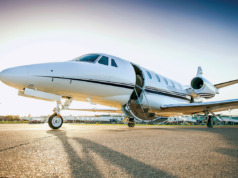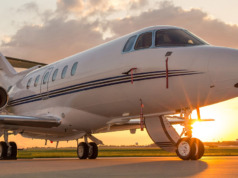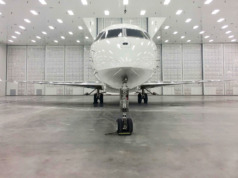
What if you could own and access a turbine aircraft when you needed to fly, but only be responsible for 50% of the fixed costs of ownership? Co-ownership of a business aircraft represents such an opportunity, and can be very cost-effective if you would not, or could not, purchase an entire aircraft yourself. And if you already own a whole aircraft, finding a partner with whom to share those costs can make sense, particularly if you’re under-utilizing your aircraft and want to reduce the total operating costs attributable to your own use.
If you currently use charter, fractional ownership, and/or a jet card arrangement, you may outgrow these means of accessing business air transportation as your travel needs increase. You may want the added convenience of having your own aircraft with your own crew, locally based and at your disposal. Co-ownership may be your best option.
If you expect to fly between 100 and 200 hours per year, owning a whole aircraft becomes very expensive. As a result, such aircraft owners frequently turn to a management company to charter out the aircraft when it’s available, generating third party revenue to help offset their full ownership costs.
While there are advantages to this type of arrangement, it still requires an upfront 100% investment in the aircraft and exposure to funding a significant portion of the airplane’s fixed operating costs. In addition, there may be extra crew training costs, additional maintenance costs, and possibly more investment in the aircraft in order to qualify it to fly under the FAA’s Part 135 charter regulations.
Co-ownership of an individual aircraft has not received more recognition because it can be difficult to make it work well for both co-owners. While co-ownership does offer the same tax and title advantages of whole aircraft ownership, as well as flying with your own crew every time, several key factors must be considered in order to make co-ownership successful:
- Owner Compatibility – The two co-owners must be able to work together to compromise on any scheduling conflicts or other aircraft-related matters that arise. Ideally, they should be geographically proximate, in order to minimize the number of ferry hours needed to accomplish both individuals’ flight schedules. Furthermore, each owner needs to be assured that the other is financially capable of supporting his/her part of the deal. And each owner must be allowed to implement his/her own financing as well as take advantage of all available tax benefits of ownership.
- Aircraft Scheduling – A major factor in making a co-ownership relationship work is agreement on scheduling guidelines that are easy to follow and give both owners confidence that they will be able to use the aircraft a very high percentage of the time they need it.
- Third Party Management – Neither co-owner likely has the time or the expertise to manage the numerous tasks necessary to safely and efficiently operate a shared business jet. Using a competent management company that has experience with co-ownership arrangements will go a long way toward making the situation successful. The management company serves as a neutral third party to implement the scheduling guidelines and help minimize the number of potential owner conflict areas, as well as provide “back-up” aircraft in case of unavoidable schedule conflicts. In addition, the management company will routinely take care of all the behind-the-scenes issues that arise that the co-owners don’t want to handle.
In the right circumstances, a 50/50 co-ownership arrangement can be a great solution for your travel needs. (See: “Giving Half a Whole Lot of Thought,” BAA July/August 2017.) However, it is not for everyone and potential pitfalls need to be avoided. To ensure the highest likelihood of success, work with an aviation consultant or management company with proven experience with such arrangements. BAA
David Weil, MBA, CEO, Flight Department Solutions, previously served for 17 years at TAG Aviation USA, and served as President of its subsidiary, AMI Jet Charter. He is a past Chair of NBAA’s Tax Committee.




